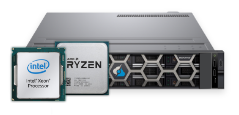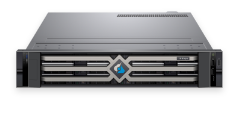What is Chia Coin and How Does Chia Plot Farming Work?
What is Chia Coin and How Does Chia Farming Work?
Chia Coin and subsequently Chia farming is predicated on the notion that cryptocurrency should be made available for everyone to participate and profit from while using almost no resources. It is far less resource-intensive than most cryptocurrencies and carries with it considerably fewer hardware costs.
If you are considering starting a Chia farm, know that Chia requires plenty of hard disk space to create plots and to provide proof of space on the Chia network. Only then you can begin farming. Sound foreign? Don’t worry, let me explain.
Blockchain and Cryptocurrencies
If you are not familiar with Cryptocurrencies and all of their iterations, just imagine each digital coin as a different currency where its value is tracked on the Blockchain, much like the value of most stock indexes such as the S&P or NYSE.
Envision the Blockchain like a financial ledger that keeps track of every transaction made using cryptocurrency. Instead of holding that ledger in one single space where it can be attacked by malicious actors, it is held and accounted for by thousands of people who mine for various cryptocurrencies, also known as miners or farmers. On the Blockchain, transactions are recorded with an immutable cryptographic signature called a hash that miners record. These are incredibly complex mathematical calculations that can only be processed by a computer.
After purchasing highly expensive computers and processors that drive up hydro bills, farmers then mine for coins while helping to keep secure all of the transactions that take place within their respective cryptocurrency blockchains (i.e. Chia Network). In return, they receive block rewards in the form of digital coins for their part in helping to keep the system (the Blockchain) secure.
Fundamentals of Cryptocurrencies
Okay, I am starting to get it now, but why all of the hoopla? In addition to the guaranteed security that crypto offers, many of the currencies seem to become highly valuable over time. The problem with most cryptocurrencies is that their value can swing dramatically, increasing and decreasing in short periods. The hope with bitcoin and other crypto investors is that they choose a currency that has enough going for it, hoping that it will be one of the ones that both increase in value and remain around for the long haul. How do you choose that gem? Well, how does one go about choosing a relevant stock? Do your homework.
While many wish to invest in the crypto market, in this article, we want to focus primarily on mining and farming. This is how you create Crypto; take, for example, Eva, she decides that she wants to mine crypto. She buys the hardware, mines 1500 new crypto coins and makes them available on the market. Jakob likes the sound of her coin currency and buys 1000 of them for $20 each, investing $20k. The value of Eva’s new cryptocurrency just went up. Eva is happy because she owns the remaining 500 coins now valued at $10k. Mark, who is watching the blockchain landscape, sees the value of Eva’s coins go up, thinking it could reach $100 per coin soon. He now decides to buy some of her remaining coins, while Jakub sells half his coins. Now, the value of all of the coins increases.
This brings us back to Chia…
Proof of Work vs Proof of Space (and time)
With so many people tracking crypto transactions in real-time, it is no wonder why processing crypto is so resource-intensive. All of the miners working on the blockchain at once are what gives crypto its security. This is what we call Proof of Work or POW. Each Chia creator’s processes are compared against each other in the Blockchain, which is why the system remains secure. If even a single transaction is off, the system immediately looks for the error, compares it to the rest, and performs an error correction protocol. Again, with so many miners around the world, these processors consume exorbitant amounts of energy.
Chia farming is based on the principle that a) the cost of entry to mining should not be cost-prohibitive to the average person, and b) should not be so energy-intensive, i.e. making mining for Chia cryptocurrency “green”. This brings us to the philosophy that Chia Coin founder and BitTorrent creator Bram Cohen developed for his fledgling Chia currency, which is “Proof of Space”.
Proof of Space is when a farmer creates one or multiple plots on a hard drive to be “farmed” over time on temporary storage, instead of using the resource-intensive processes of other cryptocurrencies. This is a way to prove that you are keeping some storage unused on your hard-disk drive (proof of space).
Proof of time requires a small period of time to pass between blocks. Proof of time is implemented by a Verifiable Delay Function that takes a certain amount of time to compute but is very fast to verify. Together this is referred to as the space and time model.
How to Start Farming Chia Coin
Set up
To become a chia farmer, you must install the Chia software on your Mac, Linux or Windows PC operating system to gain access to the Chia network. You must then run the GUI (Graphical User Interface) in order to install the Chia blockchain. Once the program is executed, you will be connected to the entire network through other computers (via a chia node). This could take up to six hours as you are downloading all of the transactions that have ever been processed on the Chia Cryptocurrency blockchain.
Storage: Hard Drives and Speed
You need to know how Chia farming works in order to choose the right drives, as Chia network traffic is always moving data between storage devices. On the Chia blockchain, when data needs to be replaced out of one block, the drive will need to read the original block, update it, write the new block to a different location on the drive, and then erase the previous block. This is an ongoing, necessary process to farm Chia coin which is why you will require oodles of temp storage space.
Because Chia coin farming and creating plots take a lot of hard drive space, it is generally recommended that you have several hundred GBs of hard disk space as a single plot takes about 370 GBs. If you’re planning ongoing farming, you would be wise to pick up a terabyte or four. The beauty of the farming process is that if you happen to have unused disk space lying around, you can simply use them. With that said, be cautious and limit the number of internal/consumer-grade SSD/HDD that you use as you can count on them burning out eventually, creating the need for tons of temp storage. Consider this simply part of the cost of doing business.
You will also want drives that have a very high read/write speed. It is often recommended that you use an SSD as your temp drives and then move the data to HDD. And while you can use almost any drive, we do recommend purchasing commercial-grade enterprise or business storage devices such as M.2 NVMe SSD, but SATA SSD can work as well. You must understand, though, that if you use your existing consumer-grade drives, you will burn them out after creating only a few Chia plots. This is why it is important that you keep your temporary storage cool so you can extend the life of your active plots.
Your Chia farm should be capable of the largest amount of storage you can afford, while also using the fastest drive you can afford. By purchasing the right storage devices from the beginning, you will have greater chances of earning farming rewards faster.
Plotting and Farming
The blockchain is a smart transaction platform and your farm is one of many that records and facilitates these transactions cryptographically. Each Chia plot is filled with data and calculations that are stored, not unlike a spreadsheet, in blocks called hashes.
Depending on the speed of your storage devices, creating plots takes approximately 4 to 6 hours. These ‘new plots’ are where you will farm Chia coin from and are just over 100 GB each.
Look at Chia farming and the plotting process as real-life farming. First, you clear the field (delete everything from the drives), then you plow the field (Chia plotting), then you add water (watch and monitor). In time, just like in agriculture, you wait for your crops to grow and in this case, it’s Chia coin farming.
How Do I Earn Chia
As people trade Chia Cryptocurrency throughout the day, the Chia farmers facilitate them and in return are provided with a block reward, Chia coins of their own. Instead of the proof of work model required by traditional cryptos, ‘the proof of space’ model is used by Chia, allowing for not only greener operations, but it takes considerably less time to complete a transaction on the Chia blockchain. It’s estimated that you can sow your plot, earning coins from each plot for up to five years.
When you’re farming Chia, you will receive a request from the Chia network where it will compare your files against someone else’s plot files. If the plot file matches theirs, then you win the transaction and a block reward.
If you probably think that this sounds too good to be true, you may be right. The chances of your solving a Chia coin computation depend on how much hard disk space you have at your disposal. As we have seen with so many coins before, there is a glut of big crypto miners hitting the market and buying all kinds of equipment. With Chia, the chances of you winning a block and matching a hash are pretty slim. Although this doesn’t mean you can’t win. There are upwards of five thousand Chia blocks created every day, increasing your chances of matching and subsequently winning the transaction.
The Verdict
The farming process can take insurmountable temporary storage, but also requires very little network bandwidth. It also allows the average person to get in on the wealth. With the price of hard drives incredibly low and being able to pick up a Raspberry pi for less than $100, this makes Chia farming highly attractive for the average Crypto enthusiast.
With Chia’s value now leveling off from its peak in May, many are expecting it to hit $1000, perhaps even by the end of the year. For you and I, maybe we just wait for Bram Cohen to take the Chia public for a mini-IPO as he has stated, and we buy ourselves a few shares, or maybe even some coins.
The management team for the Chia Network is a virtual who’s who of tech leaders, including Gene Hoffman, the former founder and chief executive officer of eMusic.com and subscription management firm Vindicia, and Mitch Edwards, the former acting-CEO of online retailer Overstock.com. Their collective goal is to become the DeFacto payment system for companies and institutions, including banks and governments.
Executives at Chia Network plan to take the company public, either through an initial public offering (IPO) or a special purpose acquisition company (SPAC). The firm has set the goal to go public relatively soon, Hoffman told Bloomberg:
“Our goal has always been to go public relatively quickly as that will significantly clarify our regulatory environment and allow customers to use currency to hedge public market volatility, which is different from other coins.”
In addition to their stellar executive management team, many of the usual VC’s have lined up with their checkbooks. Investors in the company include Andreessen Horowitz, Greylock Partners, True Ventures and Galaxy Investment Group.
We hope that you found this article informative, please send us a comment, give it a like and if you’re up for it subscribe to be the first to learn the latest tech trends. Let us know what kind of content you’re looking for!
And if you are interested in acquiring a server for Chia, please check out our Dedicated Server Options or book a free expert consultation.
Enter your text here…
COMPLETE DIGITAL SERVER SOLUTIONS FOR ALL
Bare Metal Dedicated Servers


A single tenant, physical server allowing you full access to its resources.
Browse servers
Professional Hybrid Servers


Virtualized server platform hosted on enterprise-grade physical servers.
Browse servers
Scalable Cloud Servers


High-performance and highly-available infrastructure.
Browse servers
Managed Colocation


Our next-generation data center facilities.
Browse servers
